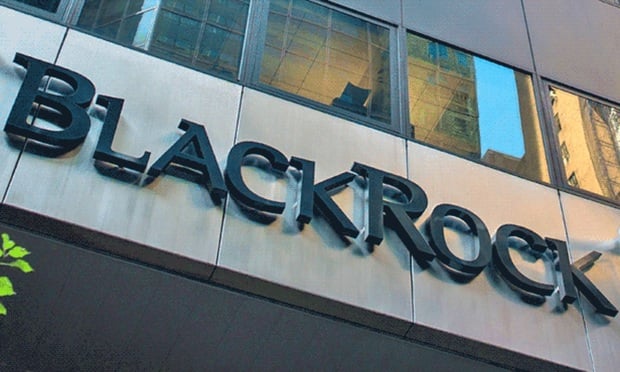Recently, IBM joined the ranks of dozens of other global companies including General Electric, Microsoft, Accenture, and Deloitte, who are replacing the annual performance review procedures they’ve had in place for decades with new performance management methods.
The traditional annual performance review process that global companies like GE and IBM have had in place for years were originally designed to help companies increase performance and revenue. However, new research shows that this widespread process demands more than 200 hours a year of managers’ time, but results in little or no correlation with actual business results.
Why it doesn’t work
For those who are lucky enough to be unfamiliar with the infamous and often tedious annual performance review, here is a short history.
In the 1980s, General Electric and companies like it popularized the idea of consolidating employees’ performance reviews each year into one number. That number is then traditionally used to rank each employee against his or her peers. Each year, the employees with the lowest rankings are asked to leave.
Human resources professionals originally designed this system and ones like it to strip companies of unproductive employees and reward productive ones. But as any HR manager who has seen a good employee get crushed by an unfair review knows, this system can also result in the loss of someone who may have statistically had a challenging year, but maintains characteristics that could benefit the company long-term.
Review systems also tend to lead to grade inflation, as managers have an incentive to give employees high scores so the review doesn’t diminish their engagement or loyalty. In other words, incentives aren’t always necessarily aligned to facilitate the goal of the reviews themselves.
Additionally, the traditional annual performance review process is linear, not cyclical: Employees receive feedback from managers, but not the other way around. Because of this, it can put employees and managers on the opposite side of the table, creating an imbalanced dynamic in which one person (the employee) is put in a defensive position.
Research shows that this can lead to the opposite outcome former GE CEO Jack Welch intended, and result in lost productivity for the employee. As any employee who has been through this process knows, it can also create an uncomfortable atmosphere that discourages teamwork and breeds unhealthy competition. That’s bad for business.
The fact that they are annual is inherently arguably the employee performance review’s biggest flaw. Employees cannot tweak or change the way they are completing a project if they don’t receive feedback until well after the project has been completed.
Seventy-four percent of millennials, who surpassed Generation X’ers as the largest generation in the workforce last year, say they feel “in the dark” about their performance. This, compounded with the changing nature of work, the competitive war on talent, and the increasing number of tools companies have accessible to them from a technology standpoint altogether seem to be finally taking down the pervasive, dreaded performance review.
Case studies
To date, nearly 10 percent of Fortune 500 companies have done away with annual rankings. Here is what they are doing instead.
Netflix: Treating people like adults
Sheryl Sandberg has called Netflix’s former Chief Talent Officer Patty McCord’s document outlining the company’s culture and philosophy “the most important document ever to come out of the Valley.” Why? Because it explains, among other things, why the annual performance review process was never really a cultural fit for the innovative company.
The process they created instead is based on one concept: treat employees like adults. “If you talk simply and honestly about performance on a regular basis, you can get good results probably better ones than a company that grades everyone on a five-point scale,” McCord has told the Harvard Business Review.
Netflix was one of the first to implement a 360-degree review system several years to help employees and managers facilitate a circular feedback process. It’s designed to foster two-way conversations that lead to high performance.
But what about performance bonuses that are usually based upon GE-style rankings? Netflix’s theory is that if you hire the right people, they will already be motivated to work their hardest and won’t need performance bonuses to incentivize them. The company believes in market-based pay and relies heavily on industry data to ensure fair market rates for talent.
During 2013 alone, Netflix’s stock more than tripled and its U.S. subscriber base grew to 29 million. Oh, and it won three Emmys, making Netflix a benchmark case study on how innovative review processes can help propel productivity and profit.
IBM: There’s an app for that
To revamp its performance review system, IBM first crowdsourced ideas from its 380,000 employee pool through its internal social media platform. The company then sorted through the 2,000+ comments from employees and grouped them into themes.
The result? An app-based performance review system called “Checkpoint.” With Checkpoint, IBM employees receive feedback from their managers on short-term goals they created in the app at least once a quarter. At the end of the year, employees are still judged, but there is no overall score like there was in the past. The review is based on five dimensions that include things like skills and responsibility to others, rather than just business performance.
Accenture: A focus on more coaching, less criticizing
Accenture, one of the world’s leading professional services companies, announced that they are shifting away from traditional annual performance reviews last August.
“Once a year, I’m going to share with you what I think about you doesn’t make any sense. It has to be every day after every client or business interaction. Now it’s all about instant performance management,” said Accenture CEO Pierre Nanterme.
Last September, the company implemented a “performance achievement” approach that is designed to enable the company’s 336,000 employees — two thirds of which are Millennials — to receive timely feedback on an ongoing basis throughout the year. The new approach includes real-time, frequent, forward-looking “coaching discussions” that help employees build upon their strengths, understand what is expected of them in their work, identify areas for growth, and develop a plan to help them achieve their career goals.
So what’s the main difference in their old and new approach? In addition to being more frequent, the “coaching discussions” are designed to be more positive and constructive than the traditional performance critique.
Deloitte: Reclaiming two million lost hours
Last April, Deloitte announced that they’ve realized the process they have in place for evaluating their employees’ work was broken. When Deloitte analyzed its review process, research showed that its managers were spending nearly two million hours a year on performance reviews.
The company changed its system so employees spend less time looking backward and more time looking forward. They found that by removing ratings, the conversations shifted from justifying past performance to discussing employees’ growth and development.
The new system is built upon uprooting a major element of the traditional performance review: questions. By changing how questions are asked, to whom they are asked and in what context they are evaluated, Deloitte has created a new performance review system that doesn’t require compression into a single number.
General Electric: Data mining employees’ performance
GE’s new performance review process is essentially based on two principles: continuous dialogue and shared accountability. Managers and their direct reports hold frequent “touch point” meetings, rather than annual ones, in which managers and peers coach each other in order to achieve business and personal performance objectives.
In order to provide its teams with the tools it needs to succeed in this new approach, GE enlisted the help of a top internal IT team to develop and launch a smartphone app. The app accepts everything from voice inputs to handwritten notes, and is designed to facilitate employee engagement and a culture of transparency.
A “summary conversation” between employees and managers still takes place at the end of each year. But the new process and tools are designed to provide a more robust set of data on which to base salary, promotions, and future assignments.
Microsoft: Better collaboration leads to better performance
Microsoft had a big problem with its annual performance review process: employees cited its stack-ranking approach as the “single most destructive process” at Microsoft — one that drove “untold” numbers of employees away.
What was so bad about it? One of the things employees detested the most about it was that it required managers to grade their subordinates on a bell curve. This meant that employees were rated on a number scale from 1 to 5, 5 being the best. Since annual bonuses were tied directly to scores, there was high incentive to be ranked at the top.
Five-star Microsoft employees would therefore avoid working with other 5-star coworkers since they knew a successful project completed by them both could hurt their individual chances of receiving five stars again. The process also incentivized managers of low-performing teams to distribute top ratings to employees who may not have deserved them, since they were forced to distribute ratings equally among members of their team.
Microsoft gathered feedback from thousands of employees over the course of several years before implementing a change to the process. Based upon the feedback, in November 2013, the company made two sweeping changes. It did away with the curve entirely, which for the first time, gave managers the freedom to allocate rewards to employees as they see fit. It also did away with ratings.
Today, while Microsoft may not have the same allure as Google, it has made great strides in communicating its culture to the industry and in continuing to engage top talent.
Lessons Learned
Employees with world-class talent expect and appreciate world-class HR practices. The annual performance review process has been broken for decades. Let’s learn from these companies and fix it.
© Touchpoint Markets, All Rights Reserved. Request academic re-use from www.copyright.com. All other uses, submit a request to [email protected]. For more inforrmation visit Asset & Logo Licensing.






